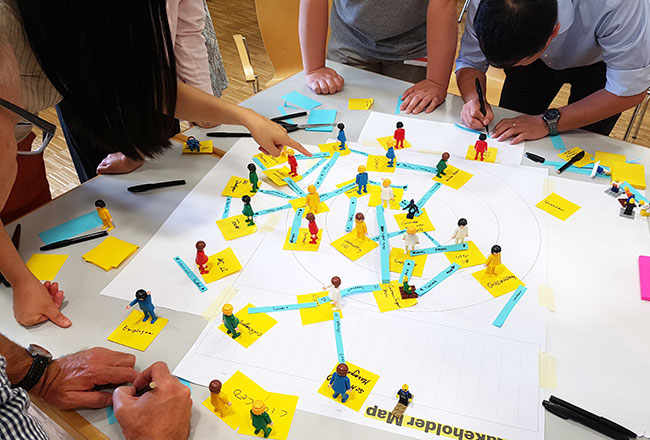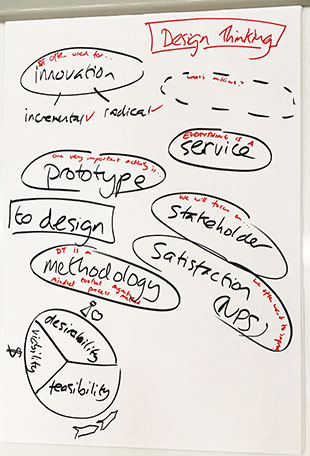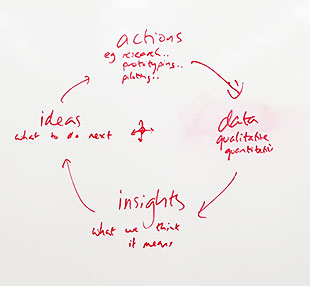Delivering (even) better service with Design Thinking

For us in China, too, Design Thinking is becoming an increasingly important approach to bringing products, solutions and services even closer to the customer. This is because Design Thinking opens up new perspectives and enables innovative solutions by addressing people’s essential needs.

As SupplyOn is committed to high service quality and customer satisfaction as well as continuous innovation, we gladly seized the opportunity to attend a Global SupplyOn Design Thinking Workshop in Munich together with our German colleagues. The workshop was led by the renowned author of the book “This is Service Design Doing”, Adam Lawrence.
Essentially, we aimed to answer the following question: “How can we further improve service quality and interaction between SupplyOn and Chinese customers?” After all – and this also became evident during the workshop – Chinese customers have even higher expectations of an immediate, extensive and very individual service than anywhere else.
Design Thinking as a cycle

To meet exactly these expectations and needs, Design Thinking applies various methods. As basis we chose Adam Lawrence’s proven cycle model with its four steps “data”, “insights”, “ideas” and “actions”.
In this model, the first step is to gather information from various sources and then analyze it in more detail during the next step. To do this, we used methods such as Personas, Stakeholder and Journey Maps.
Yet we were not only interested in the actual use of our applications. More importantly, we wanted to obtain a holistic 360-degree view of the entire daily routine of our users. Our cross-departmental, intercultural group of participants proved to be particularly valuable in this. Next to our Chinese consulting colleagues, product development and support from the German headquarters also attended in the workshop.

This allowed all of us to gain in-depth insights into the decision-making processes on the customer and supplier sides in China. But also to better understand cultural differences and the particular needs of Chinese users.
Building on this, we developed numerous compelling ideas on how to better support our customers and suppliers in their daily work and how to make workflows future-proof. In the next step, we evaluated all of these with the help of a so-called Idea Portfolio. Now, we are entering the final phase: implementation. And with this, the cycle starts all over again.
Service quality is a path, not a status

Keep in mind: Service quality is a path that never ends. Thus, we are committed to our “customer first” credo. And we are working relentlessly on making our service and our solutions even better every day.
On our Wechat account, you can find a more detailled how-to-guide on the three core Design Thinking methods Stakeholder Map, As-it User Journey Map, and Idea Portfolio (in Chinese).
By the way: If you would also like to use Design Thinking to enhance your service quality, we can fully recommend Adam Lawrence’s workshops. For more information, click here:
http://www.workplayexperience.com/



